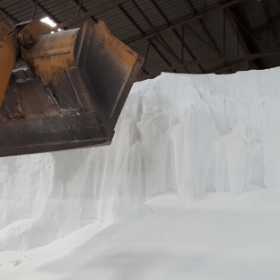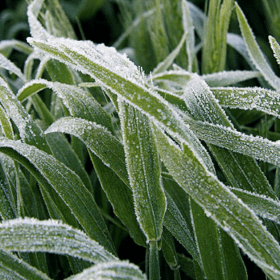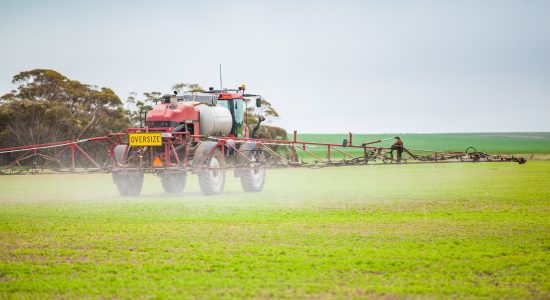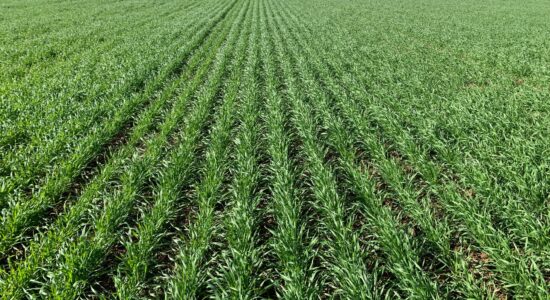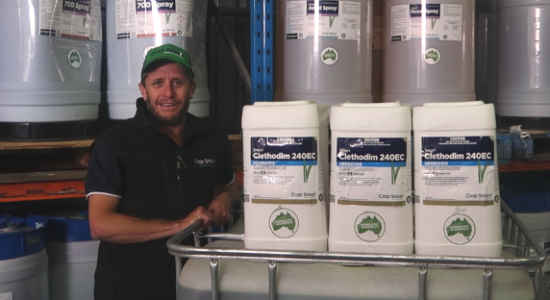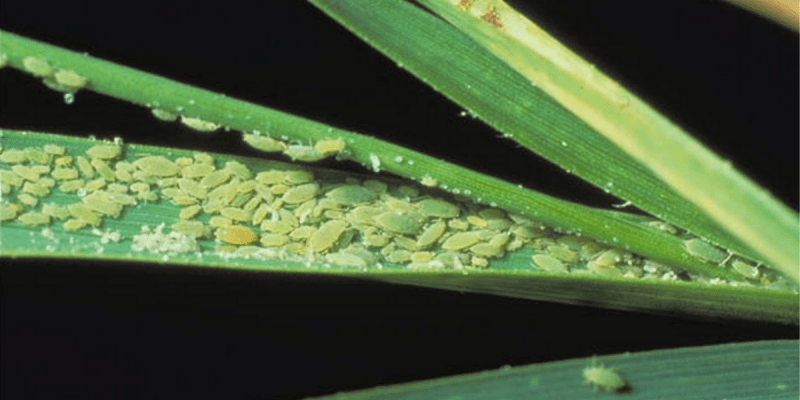
Russian Wheat Aphids
Russian Wheat Aphid
Russian Wheat Aphids (RWA) have recently been reported in Vic and SA recently, providing the perfect time to consider your pest management strategies and RWA control options.
What to look for
Cereal crops will show signs of chlorosis, necrosis, wilting, stunting, leaf streaking (white, yellowish and red streaks), rolled leaves, and heads that fail to flower and heads with a bleached appearance.
The aphid itself is generally pale green in colour, adults are usually around 2mm long and have 2 tiny tails at the rear end of their body – a distinct difference between the RWA and other cereal aphids. Colonies are found most frequently on the youngest leaves/newly emerged flowers and seed heads.
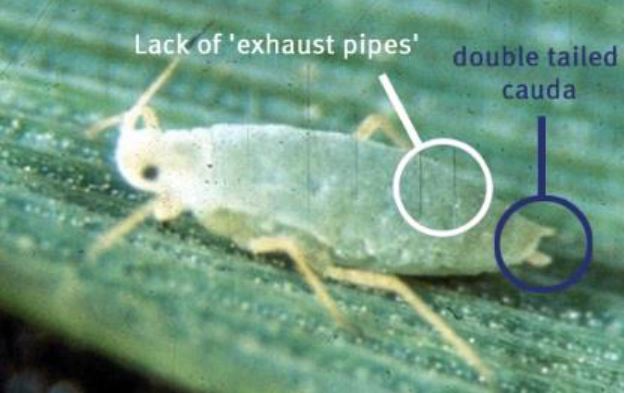
Control
It’s best to time pesticide options around peak aphid activity and during early crop establishment in Autumn or during Spring when populations are likely to increase. Spraying when aphid numbers are low may result in killing off natural predators.
Chemical management should not be your entire strategy, but instead be a key consideration within a broader management strategy (that consists of controlling the ‘green bridge’, considering planting timing and location, seed treatment options etc). Currently, Chlorpyrifos and Pirimicarb are registered for control under the APVMA but should only be considered after evaluating economic thresholds, insecticide resistance in other crop pests, natural pest enemies, and beneficial insects, as part of your integrated pest management. Seed treatment options include coating seed with Imidacloprid, which can prevent emergent seedlings from aphid damage early in the season.
*This season a lot of growers have noticed increased aphid populations due to not using Imidacloprid on their seed, remember that prevention is always better than cure!
The GRDC also promotes the FITE (Find, Identify, Threshold approach and Enact) strategy which encompasses points previously discussed;
- Find – Look for aphids and the characteristic plant symptoms of infection including leaf streaking or leaf rolling on cereal crops and grasses;
- Identify – Positively identify RWA by consulting with an industry specialist;
- Threshold approach – Before deciding on your plan of attack consider thresholds for control, the presence of natural aphid enemies in the crop, crop growth stage and potential yield losses;
- Enact – Take appropriate action: Manage your next steps, including encouraging beneficial insects and protecting honeybees before implementing control options.
Please contact your local Crop Smart agronomist to discuss your pest management strategy and possible options for RWA eradication.
More useful resources/detail can be found here:
Russian Wheat Aphid Declared Pest

